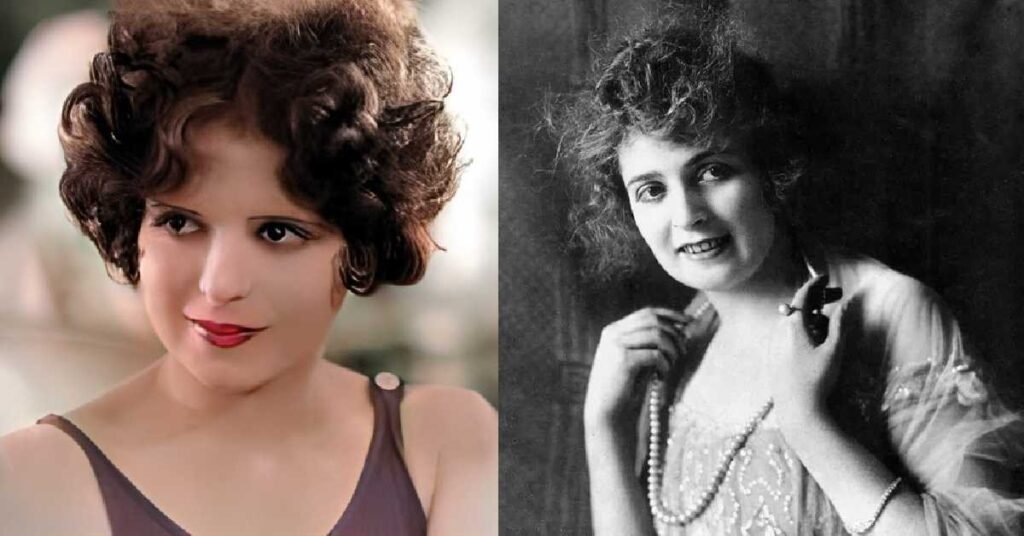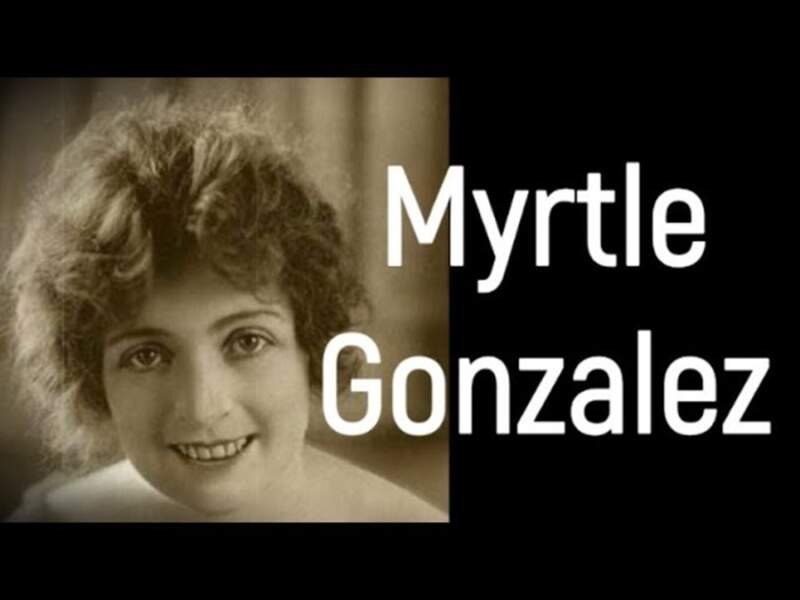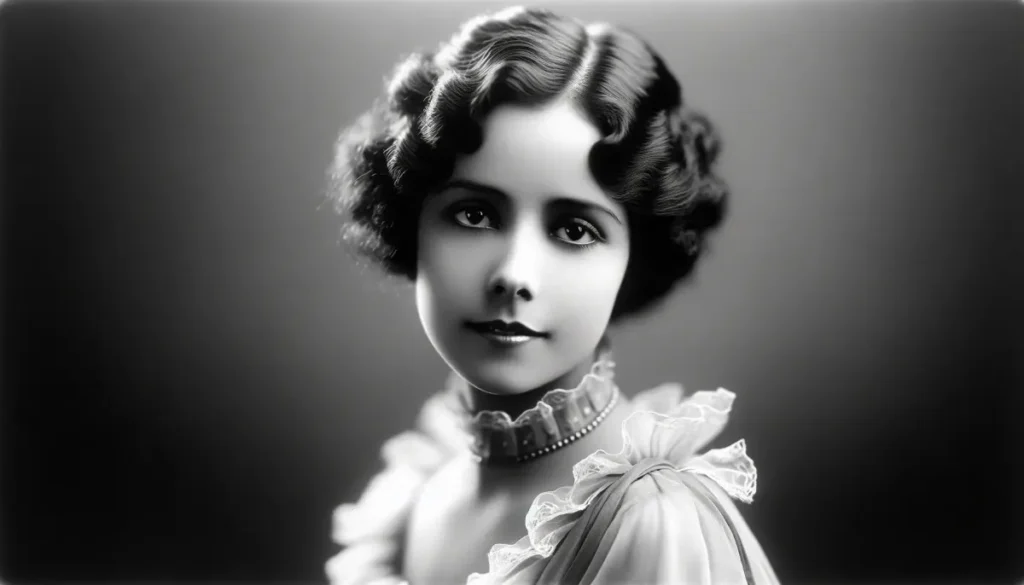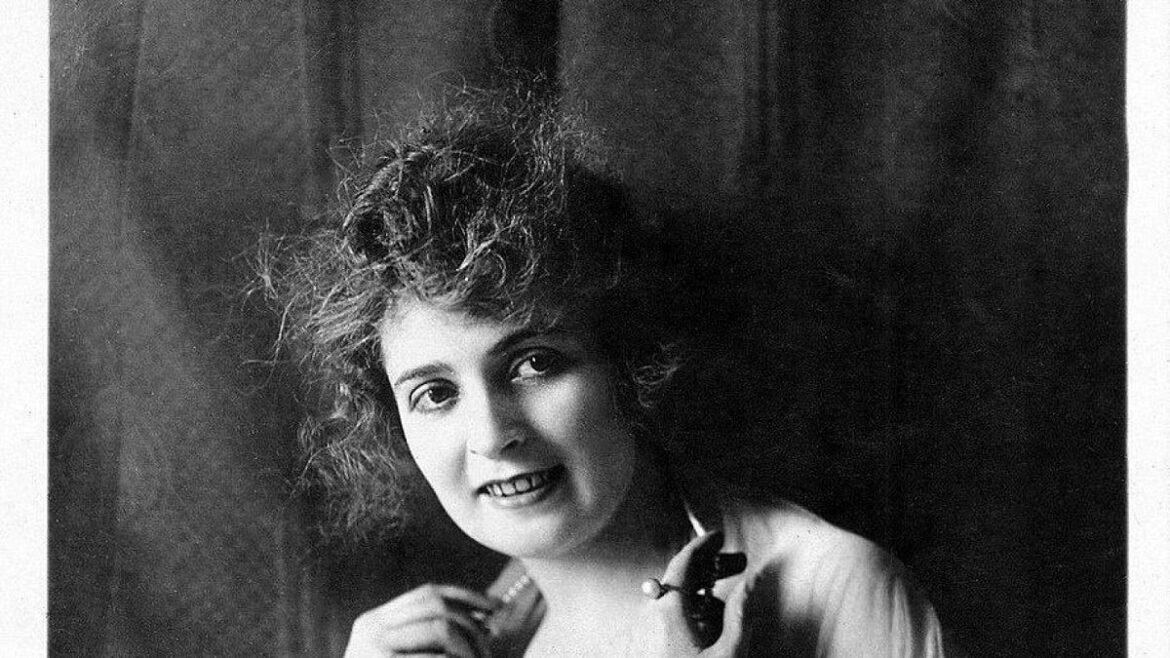Myrtle Gonzalez, a pioneering figure in the early days of Hollywood, remains an emblematic figure in the silent film era. Her career, though short-lived, was marked by a series of firsts and significant achievements that paved the way for future generations of actresses, particularly those of Hispanic heritage. In this comprehensive exploration, we delve into Gonzalez’s life, career, and legacy, offering insights into her contributions to the silent cinema and her lasting impact on the film industry.
Early Life and Entry into Acting
Born on September 28, 1891, in Los Angeles, California, Myrtle Gonzalez was introduced to the arts at an early age. Her father, Manuel Gonzalez, a second-generation Californian of Mexican descent, and her Irish-American mother, Lillian Cook, were both involved in the local theater scene, which undoubtedly influenced Myrtle’s early interest in performing arts.
Growing up, Gonzalez demonstrated a natural aptitude for acting, singing, and dancing. Her early education was steeped in the arts, and by her teenage years, she had developed a strong, melodious singing voice, which became her ticket into the entertainment industry. Her first foray into the professional world of acting was through stage performances in local theaters, where she quickly garnered attention for her talents.
In the early 1910s, as the film industry began to burgeon in and around Los Angeles, Gonzalez made the transition from stage to screen. This move coincided with a pivotal moment in cinema history, as the silent film era was reaching its zenith. Gonzalez’s foray into films was not just a personal career move; it was a significant step for Hispanic actors in an industry where they were grossly underrepresented.
Rise to Prominence in Silent Cinema

Myrtle Gonzalez’s entry into silent films was marked by her roles in short films, which were the norm at the time. Her first film appearance is believed to be in a short film titled “Curse of the Swamp” in 1913. Following this, she quickly ascended the ranks in Hollywood, thanks to her captivating screen presence and versatile acting skills.
Her breakout role came in 1914, with the film “The Level,” where she played the lead role. This film showcased her ability to portray complex characters and marked her as a rising star in silent cinema. Gonzalez’s talent for expressing a wide range of emotions without the use of sound was particularly noteworthy. In an era where body language and facial expressions were paramount, she excelled, captivating audiences and critics alike.
Throughout her career, Gonzalez appeared in over 30 films, many of which have unfortunately been lost over time, a common fate for many silent films. However, her performances in surviving films, such as “The Greater Love” (1916) and “The Law of Nature” (1916), remain testaments to her skill and charisma. She often portrayed strong, independent women, roles that were both progressive and influential for the time.
Breaking Barriers and Setting Precedents

Gonzalez’s success in silent films was groundbreaking, particularly as a Hispanic woman in an industry dominated by white actors and actresses. She is often credited as the first Hispanic film star in Hollywood, a title that, while difficult to conclusively verify, underscores her significance as a trailblazer in the film industry.
Her presence in mainstream American cinema during the 1910s challenged the prevailing norms and stereotypes about Hispanic individuals. Gonzalez’s roles were diverse and did not confine her to the stereotypical portrayals of Hispanic people prevalent in cinema at the time. By taking on a wide range of roles, she helped pave the way for more nuanced and respectful representations of Hispanic characters in Hollywood films.
Personal Life and Untimely Demise
Off-screen, Myrtle Gonzalez led a life marked by both passion and tragedy. She was married twice, first to actor and director Allen Watt and later to actor and director William V. Mong. Her second marriage to Mong was particularly noteworthy, as the couple often collaborated in their professional lives.
Tragically, Gonzalez’s life and career were cut short by the 1918 influenza pandemic. She contracted the flu and passed away on October 22, 1918, at the young age of 27. Her untimely death was a significant loss to the film industry and to the nascent community of Hispanic actors and actresses in Hollywood.
Legacy and Recognition

Despite her brief career, Myrtle Gonzalez left an indelible mark on the film industry. Her contributions to silent cinema are not only measured by her performances but also by the barriers she broke and the paths she forged for future actors of Hispanic descent.
In recent years, there has been a renewed interest in Gonzalez’s life and career, with film historians and scholars acknowledging her role as a pioneer in the industry. While many of her films are lost, her surviving works continue to be studied and celebrated for their artistic merit and historical significance.
Gonzalez’s story is also a reminder of the many talented individuals in the early days of cinema whose contributions have been overlooked or forgotten. Her legacy inspires ongoing efforts to recover and preserve the works of early film actors and actresses, particularly those from underrepresented communities.
FAQs on Myrtle Gonzalez
1. Who was Myrtle Gonzalez? Myrtle Gonzalez was an American actress, recognized as one of the prominent figures in the silent film era. She was known for her roles in various silent films during the early 20th century and is often celebrated as one of the first Hispanic film stars in Hollywood.
2. What is Myrtle Gonzalez known for? Gonzalez is known for her pioneering role in silent cinema, particularly as a Hispanic actress during a time when such representation was scarce in Hollywood. She starred in over 30 films and was renowned for her ability to convey deep emotions without dialogue, a crucial skill in silent films.
3. What were some of Myrtle Gonzalez’s notable films? Some of her notable works include “The Level” (1914), “The Greater Love” (1916), and “The Law of Nature” (1916). Unfortunately, many of her films are lost, but these surviving titles remain significant in studying her contribution to cinema.
4. Did Myrtle Gonzalez face challenges in her career due to her heritage? Yes, being a Hispanic woman in early Hollywood, Gonzalez faced numerous challenges. Despite this, she succeeded in securing a variety of roles that broke away from the stereotypical portrayals of Hispanic people prevalent at the time.
5. How did Myrtle Gonzalez’s career impact future Hispanic actors in Hollywood? Gonzalez paved the way for future generations of Hispanic actors by breaking barriers and challenging stereotypes. Her success demonstrated to the film industry that Hispanic actors could play a diverse range of roles and appeal to broad audiences.
6. What was Myrtle Gonzalez’s early life like? Born in Los Angeles in 1891 to a family involved in the local theater scene, Gonzalez developed an early interest in performing arts. She began her career on stage before transitioning to silent films.
7. When did Myrtle Gonzalez pass away, and what was the cause? Myrtle Gonzalez died on October 22, 1918, at the age of 27. Her death was due to complications from the influenza pandemic that swept across the world in 1918.
8. How is Myrtle Gonzalez remembered today? Today, Gonzalez is remembered as a trailblazer in silent cinema and a pioneer for Hispanic actors in Hollywood. Her surviving films are studied for their artistic merit, and she is celebrated in film history as a significant early actress.
9. Are there any biographies or documentaries about Myrtle Gonzalez? While there are no specific biographies or documentaries solely dedicated to her, Gonzalez is often featured in works about early Hollywood and the silent film era. Her contributions are also highlighted in studies focusing on diversity in early American cinema.
10. Has Myrtle Gonzalez received any posthumous recognition or awards? Gonzalez has not received specific posthumous awards, but her work and legacy are increasingly recognized and celebrated in film history and studies on early cinema. Her role as a trailblazer for Hispanic actors in Hollywood is particularly emphasized in these discussions.
Conclusion
Myrtle Gonzalez’s journey from a young talent in local theaters to a celebrated star of silent cinema is a testament to her talent, determination, and pioneering spirit. Her legacy as a trailblazer in the film industry, particularly for Hispanic actors, remains an important chapter in the history of cinema. Gonzalez’s life, although tragically short, was marked by significant achievements that continue to inspire and influence the world of film today. As we look back on the era of silent cinema, Myrtle Gonzalez stands out as a shining example of talent, resilience, and trailblazing spirit, her story echoing through the annals of film history.




